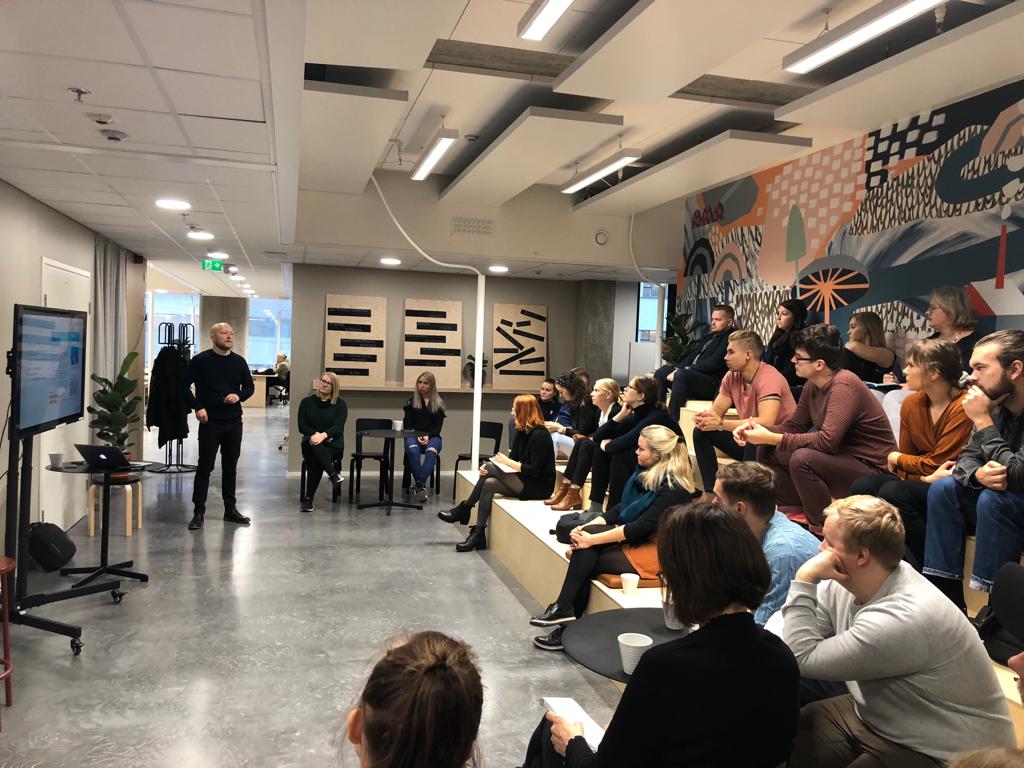On 17.10. Waffle Wednesday took a close look at website’s search engine optimization, when Digiteam’s Riku Seppälä dealt with the topic through a case study, which reviewed the optimization process and measures of a home care online store.
Below is a summary of the steps used by Riku in the SEO process of the website.

1.Keyword Research
Good optimization begins with keyword research to identify which themes and terms customers are looking for in your services. What words and phrases do your target audience use? How much volume does each search term have? It is important to find search terms that serve people, not search engines. Once you’ve identified the terms that are important to your business, you can build your site and its content to meet people’s needs instead of trying to optimize your site to match the search terms you imagine people are looking for. Keyword Search also helps you understand how competing terms are, so you have better weapons in search engine advertising (SEM) budgeting.
2.Sitemap and contents
Based on keyword research, we start building a website structure and content map. By knowing the desired search topics and keywords, you can build a site’s sitemap and content with collected information.
The mapping also helps you generate useful content for your customers, for example on your blog, which in turn drives relevant traffic to your site. Focus on the most relevant themes and terms that can be expected to bring sales to your business.
3.SEO per page
Each page must be individually optimized to ensure that all of the in-house SEO elements are in place. Pay attention to the page title, H1 (+ possible H2 and H3 titles), text content, alt text of images and meta descriptions of search results pages. Each of these should respond as effectively as possible to the content of the site, which in turn is optimized for the corresponding specific search terms.
4.Technical optimization
The technical optimization of the site depends largely on the technology used, ie the platform on which your website was built. This is why it is difficult to define the measures you need for your site, but pay attention at least to your site’s download speed and indexing.
5.External linking
Links from trusted sites will increase the credibility of the site in the eyes of search engines. It is advisable to start building links from your own operating environment, ie, through customers, partners, subcontractors and other stakeholders. Linking is always the most effective when done through a keyword. For example; If your site is dealing with lawn mowing, there is an effective link to the keyword associated with that activity, rather than the name of your business in the link.
6.Continuous development of optimization
Search Engine Optimization is not a one-time thing after which you can forget about SEO. Optimization needs to be maintained and developed continuously so that every addition to your page is optimized both technically and for the content. Customers’ search behavior should also be monitored so you can respond to possible changes.
Continuous site optimization measures include image optimization (size / download speed, descriptions), internal linking, links and descriptions of search results sites, adding and updating content, utilizing metadata across the site, and excluding unwanted URL addresses from crawling.

7. Tools
Listed below are examples of Digiteam’s search engine optimization tools!
- Keyword Research
- Google Keyword Planner
- keywordtool.io
- ubersuggest.org
- kwfinder.com
- ahrefs.com
- cuutio.com
- Monitoring and Analytics
- Google Analytics
- cuutio.com
- ahrefs.com
Technology
- Screaming Frog
www.digiteam.fi
Riku Seppälä

